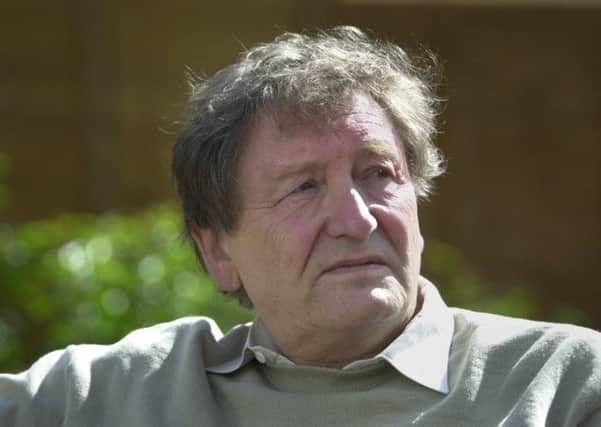Book review: A Dog’s Life by Michael Holroyd


A Dog’s Life
Michael Holroyd
MacLehose Press, 240pp, £12.99
It was published in the US, but never here. He explains why in a postscript, about a quarter the length of the novella; some may find this, with its reflections also on the difficulties of writing biographies of people, some of whose family and friends are still alive, more interesting and satisfying than the fiction.
It wasn’t published at the time it was written because the fiction was insufficiently fictional. A comic portrait of Holroyd’s eccentric and, as we would now say, dysfunctional family, it offended his father, who went so far as to threaten legal action. This was enough to make Holroyd’s publishers back off, despite the glowing endorsement of the novel by the then still famous William Gerhardie, who wrote an admiring preface. Publication now “can hurt no-one anymore and damage no-one’s reputation – except my own.”
Advertisement
Hide AdIt won’t do that, but is unlikely to enhance it either. This isn’t surprising. Fiction dates. Few novels survive a couple of generations after their own time. If A Dog’s Life had been published in the early Sixties, it might have had a modest success. Now it’s a period piece.
The action, confined to 24 hours, centres on the dying of the family dog, and the reactions to this of the various members of a declining and discordant family. Its oldest members, Eustace and Anne, are apparently based on Holroyd’s own grandparents. His father took exception to the portrayal of Eustace, who had been kind to the author as a boy, but not to the treatment of Anne, dotty to the point of lunacy, because he held her responsible for most of the family’s troubles.
He objected to his own portrayal as an unsuccessful businessman (which he apparently was) and even more to the unkind picture of Matilda, his sister and the dog’s owner. Holroyd himself thought that his novel “was a study of ageing with the accent on old age, not a photograph of my family”. There was no possible bridging of the gap between his view of the novel and his father’s.
None of this matters now. So how does it read?. It is often amusing, the perception keen, and the relish in eccentricity agreeable. The tone indeed now seems sympathetic rather than hostile. But there are evident weaknesses. First, having effectively introduced his cast, Holroyd doesn’t seem really to have known what to do with them. They go through the same motions repeatedly. This is true as a picture of domestic life, but unsatisfying in fiction. Though a short book, it lacks economy. A comparison with Muriel Spark’s treatment of old age in Memento Mori, almost exactly contemporary, makes the point.
Second, having wheeled his eccentrics on stage, Holroyd leaves them there. Evelyn Waugh knew that a little bit of an eccentric “flat” character is enough. Think of the uncles, Roderick and Theodore, in Scoop. Characters incapable of being developed are best accorded a brief time centre-stage. No doubt Holroyd would have refined his method if he had continued to write novels.
The book was worth publishing now, even though Holroyd has covered much of the same ground already in his two books of memoirs, Basil Street Blues and Mosaic. I’ve no doubt that many will find it enjoyable. In his postscript, Holroyd writes that while “the language belongs to the past and carries the comedy, the tragedy is still with us in the circumstances of prolonged old age in bleak times”. This is certainly true.Here, however, the comedy is explicit, the tragedy only implicit.
Advertisement
Hide AdThe postscript, reflecting on the relationship between fiction and biography, is fascinating. Novels and biographies are not rivals: “They are two branches of our past and present literature which is better described as creative and re-creative writing than as fiction and non-fiction”. “There has always,” he suggests, “been a trade between the novelist of contemporary life and the biographer of past times, the one asking, ‘Where are we now?’ and the other asking, ‘How did we get here?”. Here, novella and postscript invite us to address both questions. The fiction, once close to the author’s family life, now seems distant, the autobiographical considerations immediate. After all, Holroyd recognises in himself today many of the traits he found risible or irritating in his elders.